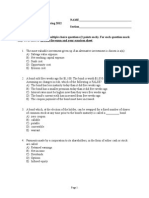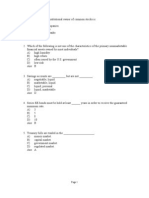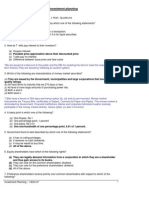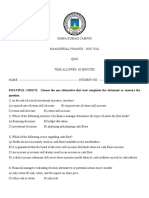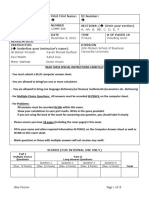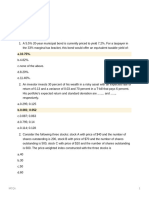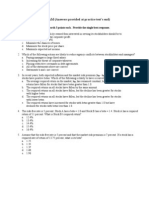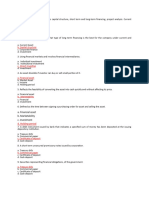0% found this document useful (0 votes)
35 views14 pagesSample Final Exam
The document is a sample final exam for a finance course, specifically focusing on bonds, mutual funds, and options. It contains multiple-choice questions that assess knowledge on various financial concepts, including bond pricing, yield-to-maturity, mutual fund operations, and stock options. The exam covers theoretical and practical aspects of investment strategies and financial instruments.
Uploaded by
jeremy nicoleCopyright
© © All Rights Reserved
We take content rights seriously. If you suspect this is your content, claim it here.
Available Formats
Download as PDF, TXT or read online on Scribd
0% found this document useful (0 votes)
35 views14 pagesSample Final Exam
The document is a sample final exam for a finance course, specifically focusing on bonds, mutual funds, and options. It contains multiple-choice questions that assess knowledge on various financial concepts, including bond pricing, yield-to-maturity, mutual fund operations, and stock options. The exam covers theoretical and practical aspects of investment strategies and financial instruments.
Uploaded by
jeremy nicoleCopyright
© © All Rights Reserved
We take content rights seriously. If you suspect this is your content, claim it here.
Available Formats
Download as PDF, TXT or read online on Scribd
/ 14


